Singer Ma Rainey was the first popular stage entertainer to incorporate authentic blues into her song repertoire and became known as the "Mother of the Blues."
"Ma" Rainey (born Gertrude Malissa Nix Pridgett, September 1882 or April 26, 1886 – December 22, 1939) was one of the earliest African American professional blues singers and one of the first generation of blues singers to record. She was billed as the Mother of the Blues.She performed during the first three decades of the 20th century and enjoyed mass popularity during the blues craze of the 1920s. Rainey's music has served as inspiration for such poets as Langston Hughes and Sterling Brown.
Ma Rainey performed at the Springer Opera House in 1900, performing as a singer and dancer in the local talent show, "A Bunch of Blackberries." On February 2, 1904, Pridgett married comedy songster William "Pa" Rainey. Billed as "Ma" and "Pa" Rainey the couple toured Southern tent shows and cabarets. Though she did not hear blues in Columbus, Rainey's extensive travels had, by 1905, brought her into contact with authentic country blues, which she worked into her song repertoire. "Her ability to capture the mood and essence of black rural southern life of the 1920s," noted Daphane Harrison in Black Pearls: Blues Queens "quickly endeared her to throngs of followers throughout the South."
Ma Rainey known as the "Mother of the Blues," enjoyed mass popularity during the blues craze of the 1920s. Described by African-American poet Sterling Brown in Black Culture and Black Consciousness as "a person of the folk," Rainey recorded in various musical settings and exhibited the influence of genuine rural blues. She is widely recognized as the first great female blues vocalist.
She began performing as a young teenager and became known as Ma Rainey after her marriage to Will Rainey, in 1904. They toured with the Rabbit Foot Minstrels and later formed their own group, Rainey and Rainey, Assassinators of the Blues. Her first recording was made in 1923. In the next five years, she made over 100 recordings, including "Bo-Weevil Blues" (1923), "Moonshine Blues" (1923), "See See Rider Blues" (1924), "Black Bottom" (1927), and "Soon This Morning" (1927).
Rainey was known for her powerful vocal abilities, energetic disposition, majestic phrasing, and a "moaning" style of singing. Her powerful voice was never adequately captured on her records, because she recorded exclusively for Paramount, which was known for its below-average recording techniques and poor shellac quality. However, her other qualities are present and most evident in her early recordings "Bo-Weevil Blues" and "Moonshine Blues".
Ma Rainey was an eye-catching performer. Although not a conventionally attractive woman, she sported wild horsehair wigs on stage and wore gold coins around her neck (an early instance of what we might now call bling). She carried an ostrich plume and had capped gold teeth that would flash when she sang. For all of her visual appeal, however, what most captured audiences’ attention was her voice, which by all accounts was huge and commanding. When she sang a “moaning” song, which would soon be referred to as blues, she could captivate a room in no time at all.
While performing with the Moses Stokes troupe in 1912, the Raineys were introduced to the show's newly recruited dancer, Bessie Smith. Eight years Smith's senior, Rainey quickly befriended the young performer. Despite earlier historical accounts crediting Rainey as Smith's vocal coach, it has been generally agreed by modern scholars that Rainey played less of a role in the shaping of Smith's singing style. "Ma Rainey probably did pass some of her singing experience on to Bessie," explained Chris Albertson in the liner notes to Giants of Jazz, "but the instruction must have been rudimentary. Though they shared an extraordinary command of the idiom, the two women delivered their messages in styles and voices that were dissimilar and manifestly personal."
Separated from her husband in 1916, Rainey subsequently toured with her own band, Madam Gertrude Ma Rainey and Her Georgia Smart Sets, featuring a chorus line and a Cotton Blossoms Show, and Donald McGregor's Carnival Show.
By 1917 Ma was packing them in. The fact that her shows were integrated – half the tent reserved for whites, half for blacks – testifies to her drawing powers in the South. When whites outnumbered blacks – not an uncommon occurrence, according to witnesses – the overflow sat peacefully in the black section. The two-hour show typically opened with three jazzy numbers by the band. Then, with a crescendo and flash of lights, the curtains opened on a line of flashy chorus girls showing knees and laced-up high heels. Ma employed chorus boys too, who were almost invariably “light brownskins” or “yellows.” “I don’t care how good a real dark-skinned person could do something,” old-time musician Clyde Bernhardt explained to author Sandra Lieb, “they just couldn’t get the credit for it from the colored person like a brown-skinned or light-brown-skinned or yellow person would. Colored people have always been more prejudiced than white people.” Next up was a hilarious skit – one of them, for instance, involving trained chickens, a coop, a thief, and a shotgun-toting “brownskin” made up to look like a bearded cracker. After that, a soubrette sang a fast dance number such as “Ballin’ the Jack,” joined by the chorus boys and girls.
Already a popular singer in the Southern theater circuit, Rainey entered the recording industry as an experienced and stylistically mature talent. Her first session, cut with Austin and Her Blue Serenaders, featured the traditional number "Bo-Weevil Blues." Fellow blues singer, Victoria Spivey, later said of the recording, as quoted in The Devil's Music, "Ain't nobody in the world been able to holler 'Hey Boweevil' like her. Not like Ma. Nobody."
In 1923, Rainey also released "Moonshine Blues" with Lovie Austin, and "Yonder Comes the Blues" with Louis Armstrong. That same year, Rainey recorded "See See Rider," a number that, as Arnold Shaw observed in Black Popular Music in America, emerged as "one of the most famous and recorded of all blues songs. (Rainey's) was the first recording of that song, giving her a hold on the copyright, and one of the best of the more than 100 versions."
During an interview with musicologist John Work and poet Sterling Brown at Nashville’s Douglass Hotel during the early 1930s, Ma claimed that she heard blues for the first time around 1902, when she played a small Missouri town. “She tells of a girl from the town,” Work wrote in American Negro Songs, 1940, “who came to the tent one morning and began to sing about the ‘man’ who had left her. The song was so strange and poignant that it attracted much attention. Ma Rainey became so interested in it that she learned the song from the visitor and used it soon afterward in her act as an encore. The song elicited such response from the audience that it won a special place in her act.” Ma explained to Work that a 1905 fire had destroyed clippings describing her singing these strange songs and that although they were not yet called blues, she reported that she had often heard similar songs as she travelled the South.
Ink Williams introduced Ma Rainey to Thomas Dorsey, a skilled piano player and blues composer who’d later write “Precious Lord” and become the beloved “The Father of Gospel Music.” Dorsey found her “grand, gracious, and easy to talk with,” and agreed to direct her touring group, the Wildcats Jazz Band. At band’s first performance, at Chicago’s Grand Theater in April ’24, the curtain opened to reveal a large prop Victrola phonograph in the center of the stage. A girl put a big record on it, the band kicked off “Moonshine Blues,” and Ma’s voice resounded from within the box. After singing a few bars, Ma opened a door and stepped into the spotlight, her necklace of gold coins and diamond-studded fingers glistening in the stage lights. The crowd went wild, calling Ma back for seven curtain calls. “She clearly proved that she was far superior to any of her predecessors,” proclaimed the next issue of Chicago Defender, the nation’s leading black newspaper.
“Ma had the audience in the palm of her hand,” Dorsey remembered in Living Blues. “I travelled with her almost four years. She was a natural drawing card.” When Dorsey got married, Ma helped keep the couple together by hiring his bride as a wardrobe girl. According to Dorsey, Ma’s touring show featured acts such as one-man-band Stovepipe Johnson, tap dancer Jack Wiggins, and Dick & Dick, who specialized in singing, dancing and joking. But Ma did most of the blues singing: “She’d have these prima donnas,” Dorsey recalled, “but they didn’t sing blues on her shows. See, they’d sing something else, like hot pop or somethin’ like that. She was the only blues performer. Naturally, you wouldn’t put another blues singer on your show – may out-sing you.
Unlike many other blues musicians, Rainey earned a reputation as a professional on stage and in business. According to Mayo Williams, as quoted in the liner notes to August Wilson's 1988 play Ma Rainey's Black Bottom, "Ma Rainey was a shrewd business woman. We never tried to put any swindles on her. During Rainey's five-year recording career at Paramount she cut nearly ninety sides, most of which dealt with the subjects of love and sexuality—bawdy themes that often earned her the billing of "Madam Rainey." As William Barlow explained, in Looking Up at Down, her songs were also "diverse, yet deeply rooted in day-to-day experiences of black people from the South. Ma Rainey's blues were simple, straightforward stories about heart break, promiscuity, drinking binges, the odyssey of travel, the workplace and the prison road gang, magic and superstition—in short, the southern landscape of African-Americans in the Post-Reconstruction era."
During the good years Ma traveled in her own railroad car and was addressed as Madame Rainey. “Ma was the greatest,” Dorsey insisted. “She was very generous and kind. She paid you your money; she didn’t try to cheat you or pass you by. She was unselfish and always trying to help other performers. She didn’t worry about whether they’d become competition. Ma called everybody ‘sugar,’ ‘honey,’ and ‘baby’ – even white folks. People of both races loved her. She used to hold what she called ‘white folks night,’ and white people would overflow wherever she played. She was the biggest star of her time. There’ll never be another black woman like Ma Rainey.” By 1927, Ma was successful enough to buy a Mack bus with her name emblazoned on the side.
Though the TOBA and vaudeville circuits had gone into decline by the early 1930s, Rainey still performed, often resorting to playing tent shows. Following the death of her mother and sister, Rainey retired from the music business in 1935 and settled in Columbus. For the next four years, she devoted her time to the ownership of two entertainment venues—the Lyric Theater and the Airdome—as well as activities in the Friendship Baptist Church. Ma Rainey died in Rome, Georgia—some sources say Columbus—on December 22, 1939.
Soures:
http://www.biography.com/
Wikipedia, Jas Obrecht Music Archive,
Ma Rainey Biography
Gertrude 'Ma' Rainey - Ma Rainey's Black Bottom
Gertrude Malissa Pridgett ('Ma'' Rainey) Full Double Album Vinyl
Ma Rainey - Prove It On Me Blues (1928)
Louis Armstrong & Ma Rainey (See See Rider Blues, 1924) Jazz Legend







































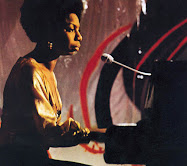

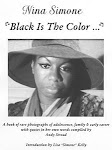

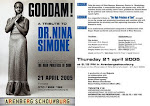

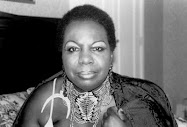






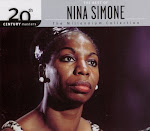



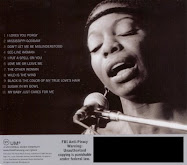
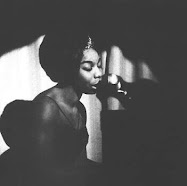

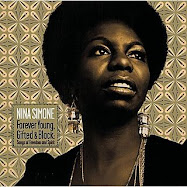









No comments:
Post a Comment